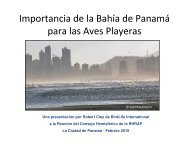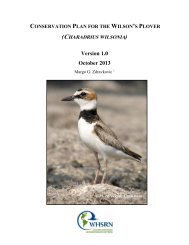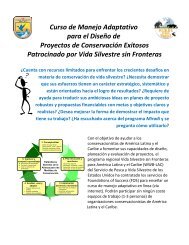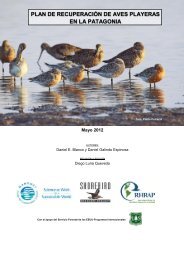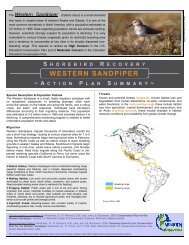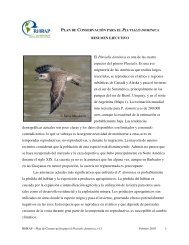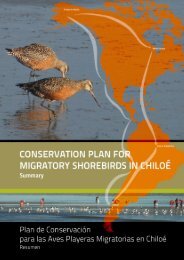Sanderling Plan - Western Hemisphere Shorebird Reserve Network
Sanderling Plan - Western Hemisphere Shorebird Reserve Network
Sanderling Plan - Western Hemisphere Shorebird Reserve Network
You also want an ePaper? Increase the reach of your titles
YUMPU automatically turns print PDFs into web optimized ePapers that Google loves.
for commercial construction projects), and mechanized beach raking (removal of seaweed and<br />
other debris for aesthetic purposes) all alter the sand composition, prey abundance, and other<br />
attributes of the habitat, and likely impact <strong>Sanderling</strong>s and other organisms as well (e.g., nesting<br />
sea turtles). These practices are common along U.S. coasts, although their impacts on<br />
invertebrate populations and their predators (i.e., shorebirds) are largely unstudied. Fortunately,<br />
however, some habitat loss and most habitat degradation is reversible. Means of reversal can be<br />
through habitat restoration or though improved/altered management practices, e.g., timing of<br />
certain practices with relation to wildlife needs, and ensuring/requiring comparable sediment<br />
particle size in imported sediments (a habitat characteristic that influences <strong>Sanderling</strong><br />
distributions; Danufsky and Colwell 2003) (Drut and Buchanan 2000).<br />
Within the breeding range, habitat loss and degradation are also issues, albeit from less<br />
visible threats. High-arctic breeding habitat is far from most human habitation and development,<br />
however global climate change impacts are exaggerated there and may disrupt prey availability<br />
and nesting habitat of <strong>Sanderling</strong>s (see Climate Change, below).<br />
Several other types of habitat degradation occur in many parts of the nonbreeding range:<br />
Exotic invertebrates, plants, and vertebrates. The introduction of exotic marine<br />
invertebrates into coastal and interior waters may impact shorebirds prey populations. Exotic<br />
plants may alter sand roost characteristics, such as through changes in dune communities or dune<br />
dynamics, or through changes in algal communities, and/or may cause changes in foraging areas<br />
(tidal flats) or susceptibility to predation.<br />
Utility lines: Many bird species, including shorebirds, have died from in-flight collisions<br />
with utility lines (e.g., Kitchin 1949, Bevanger 1994, Brown and Drewien 1995, Janss and Ferrer<br />
1998). The placement of utility lines next to intertidal areas where shorebirds forage and roost<br />
degrades habitat quality, by incurring an added source of mortality (Kitchin 1949, Buchanan<br />
2000). Additionally, utility lines or poles adjacent to foraging areas may become perches for<br />
avian predators, potentially facilitating predation impacts (see Research and Monitoring Needs),<br />
as Peregrine Falcons favor higher perch sites with better visibility and easy access to prey<br />
(Dzialak et al. 2007).<br />
Wind turbines: <strong>Shorebird</strong> mortality has been documented at wind turbine sites in the<br />
United States and the Netherlands (Buchanan 2000). Certain regions (e.g., U.S. Pacific<br />
WHSRN – <strong>Sanderling</strong> Conservation <strong>Plan</strong>, February 2010, v1.1 39




